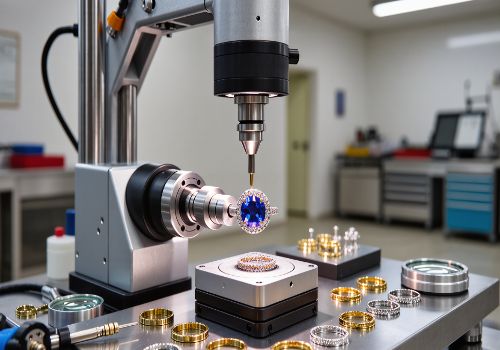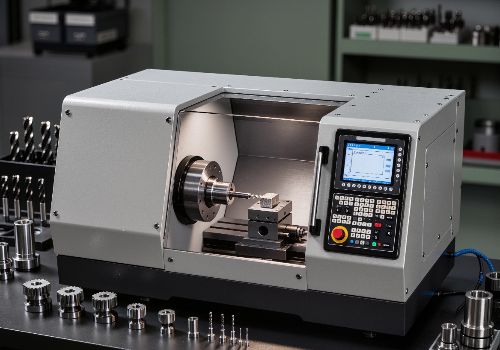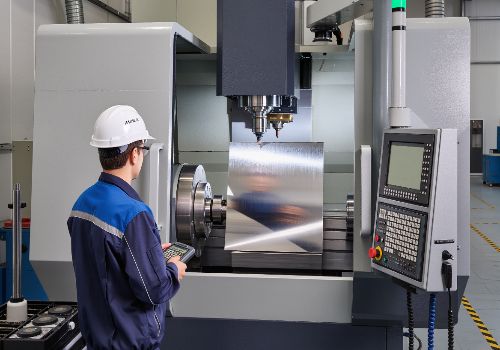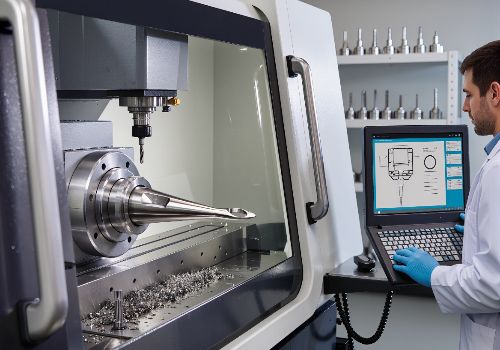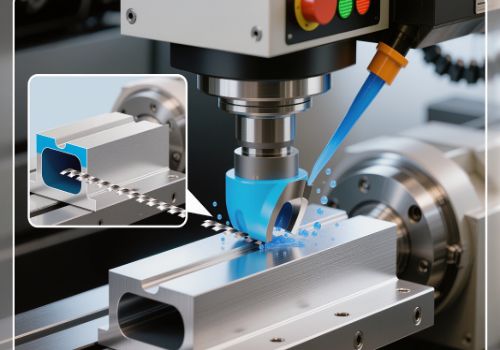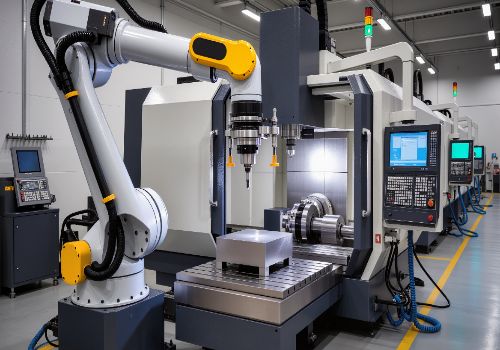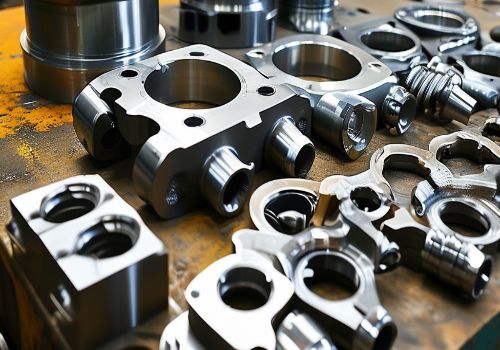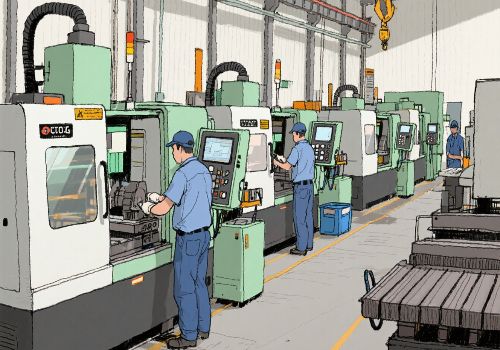Introduction
When people imagine jewelry production, they typically picture artisan craftspeople working with traditional tools—not computer-controlled machining centers. Yet CNC technology has revolutionized jewelry manufacturing, enabling precision and production capabilities impossible with manual methods alone.
The global jewelry market is projected to reach $480 billion by 2025, and CNC machining plays an increasingly crucial role in meeting this demand for both mass-market and custom pieces. From intricate wedding bands to detailed pendants, CNC machines deliver unmatched precision, repeatability, and design flexibility.
This comprehensive guide explores how CNC technology transforms raw materials into exquisite jewelry, the best practices for jewelry machining, and why many top jewelry brands now rely on computerized manufacturing.
Why Use CNC for Jewelry Manufacturing?
Precision Beyond Human Capability
-
Tolerances to 0.005mm: Far exceeding manual craftsmanship
-
Perfect symmetry: Mathematical precision in every cut
-
Complex geometries: Intricate patterns impossible to carve by hand
Production Advantages
-
Repeatability: Identical pieces in production runs
-
Rapid prototyping: Design to finished piece in hours
-
Material efficiency: Optimized nesting reduces waste
-
24/7 production: Lights-out machining capabilities
Design Freedom
-
3D complexity: Undercuts, textures, and organic forms
-
CAD integration: Direct from digital design to physical object
-
Customization: Easy modification of digital designs
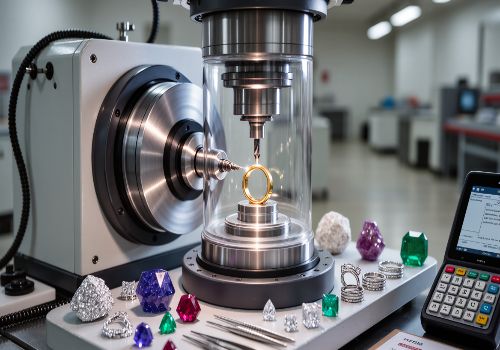
Types of Jewelry Suitable for CNC Machining
Rings
-
Wedding bands and engagement rings
-
Signet rings with detailed crests
-
Textured bands with patterns
Pendants & Lockets
-
Intricate geometric designs
-
Personalized name pendants
-
Religious and symbolic imagery
Earrings
-
Studs with precise settings
-
Hanging designs with delicate details
-
Matched pairs with perfect symmetry
Bracelets & Bangles
-
Cuff bracelets with patterns
-
Bangles with engraved designs
-
Clasps and mechanisms
Watch Components
-
Cases and bezels
-
Bracelet links
-
Decorative elements
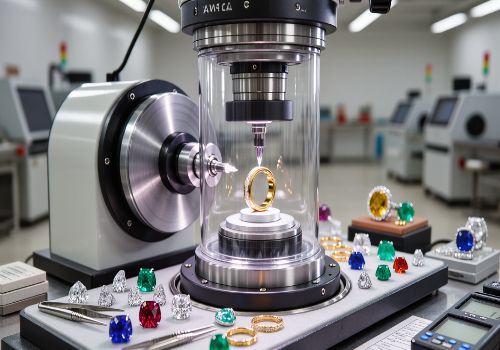
CNC Jewelry Manufacturing Process
Step 1: Digital Design
-
CAD modeling: Rhino, Matrix, or specialized jewelry software
-
Design optimization: Adjusting for manufacturability
-
Virtual prototyping: 3D visualization before machining
Step 2: Material Selection
| Material | Properties | Best For |
|---|---|---|
| Precious Metals | Gold, platinum, silver | Fine jewelry |
| Titanium | Lightweight, hypoallergenic | Modern designs |
| Stainless Steel | Durable, affordable | Fashion jewelry |
| Brass & Bronze | Warm colors, machinable | Artistic pieces |
| Acrylic & Resin | Color options, light | Statement pieces |
Step 3: CNC Machining
-
Micro-milling: Small end mills (0.1-2.0mm diameter)
-
High-speed spindles: 30,000+ RPM for fine details
-
Multi-axis machining: 4th/5th axis for complex geometries
-
Specialized workholding: Wax mounting, custom fixtures
Step 4: Post-Processing
-
Polishing: Automated or manual finishing
-
Stone setting: Precision seats for gems
-
Plating: Gold, rhodium, or specialty finishes
-
Quality control: Magnification inspection
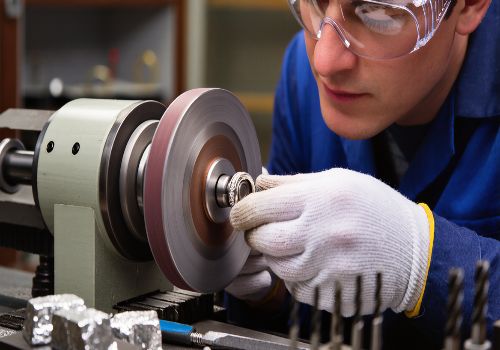
Equipment for CNC Jewelry Making
Desktop CNC Machines
-
Roland JWX-30: Jewelry-specific machining
-
Nomad 3: Benchtop precision
-
Bantam Tools: Desktop precision milling
Industrial CNC Systems
-
Datron Neo: High-speed jewelry machining
-
Haas CM-1: Compact machining center
-
Mikron HSM 200: Precision micro-machining
Specialized Tools
-
Micro-tools: Diamond-coated end mills
-
Coolant systems: Minimal lubrication for precious metals
-
Probing systems: Automated measurement and alignment
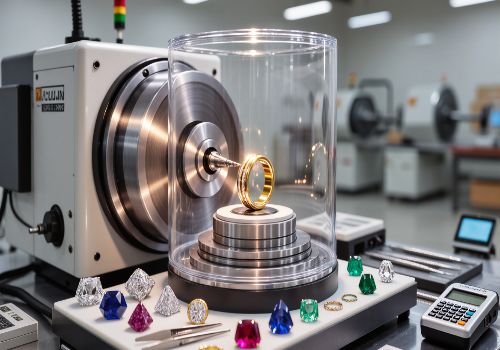
Traditional vs. CNC Jewelry Making
| Aspect | Traditional | CNC |
|---|---|---|
| Precision | Human-limited | Micron-level |
| Production Time | Days/weeks | Hours/days |
| Complexity | Limited by skill | Unlimited digital designs |
| Consistency | Variations between pieces | Perfect repetition |
| Setup Cost | Lower initial investment | Higher equipment cost |
| Customization | Skilled labor required | Digital file modification |
Design Considerations for CNC Jewelry
echnical Limitations
-
Minimum feature size: 0.1mm for most details
-
Undercut limitations: 4-axis vs. 5-axis capabilities
-
Tool access: Internal geometries and deep cavities
Best Practices
-
Draft angles: 1-2° for better surface finish
-
Fillets: 0.1mm minimum radius on internal corners
-
Wall thickness: 0.3mm minimum for structural integrity
-
Texture: Add post-processing for handcrafted appearance
File Preparation
-
STL/OBJ export: High-resolution mesh files
-
Toolpath strategy: Parallel finishing for best surface quality
-
Material consideration: Accounting for shrinkage and finishing
Materials and Their Machining Parameters
| Material | Feed Rate | RPM | Tool Type |
|---|---|---|---|
| Gold (14-18k) | 100-200 mm/min | 20,000-30,000 | Carbide, diamond |
| Platinum | 80-150 mm/min | 18,000-25,000 | Carbide, diamond |
| Sterling Silver | 150-300 mm/min | 22,000-28,000 | Carbide |
| Titanium | 100-200 mm/min | 15,000-20,000 | Carbide, diamond |
| Stainless Steel | 80-180 mm/min | 12,000-18,000 | Carbide |
Case Study: Custom Engagement Ring Production
Challenge: Create 200 unique engagement rings with intricate patterns
Solution:
-
Parametric CAD designs: Customizable template system
-
5-axis CNC machining: Complete rings in single setup
-
Automated polishing: Robotic finishing system
-
Quality tracking: RFID tags for each piece
Results:
-
💍 Production time: Reduced from 8 weeks to 5 days
-
✨ Quality consistency: 99.7% pass rate on inspection
-
💰 Cost savings: 42% reduction per piece
-
🎨 Design flexibility: Unlimited customization options
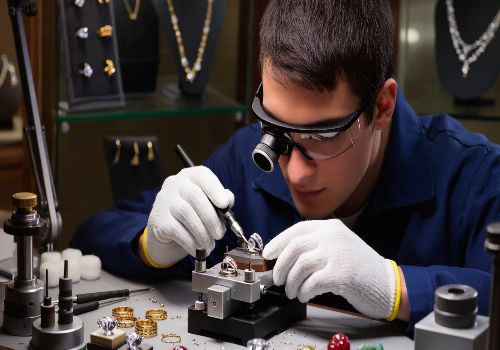
Starting with CNC Jewelry Making
For Individual Designers
-
Begin with service bureaus: No equipment investment needed
-
Learn CAD modeling: Rhino Gold or Matrix software
-
Start simple: Focus on designs that work with 3-axis machining
For Manufacturing Businesses
-
Invest in training: Both CAD/CAM and machine operation
-
Phase implementation: Start with simplest pieces first
-
Quality systems: Implement rigorous inspection protocols
The Future of CNC Jewelry Manufacturing
Hybrid Manufacturing
-
3D printing + CNC: Printing near-net shapes, machining details
-
Multi-process cells: Integrated manufacturing units
Advanced Materials
-
Metallic composites: Unique material properties
-
Sustainable options: Recycled precious metals
Digital Integration
-
AI design assistance: Automated design optimization
-
Blockchain tracking: Material provenance and authentication
Conclusion
CNC machining has transformed jewelry manufacturing from a purely manual craft to a precision digital process that combines the best of technology and artistry. While traditional skills remain valuable, CNC technology enables levels of precision, complexity, and consistency impossible to achieve by hand alone.
Whether you’re an individual designer looking to expand your capabilities or a manufacturing business seeking to improve quality and efficiency, CNC jewelry making offers significant advantages. The technology continues to evolve, making it increasingly accessible and capable for jewelry applications.
Ready to explore CNC jewelry manufacturing? Contact with our jewelry machining experts.

